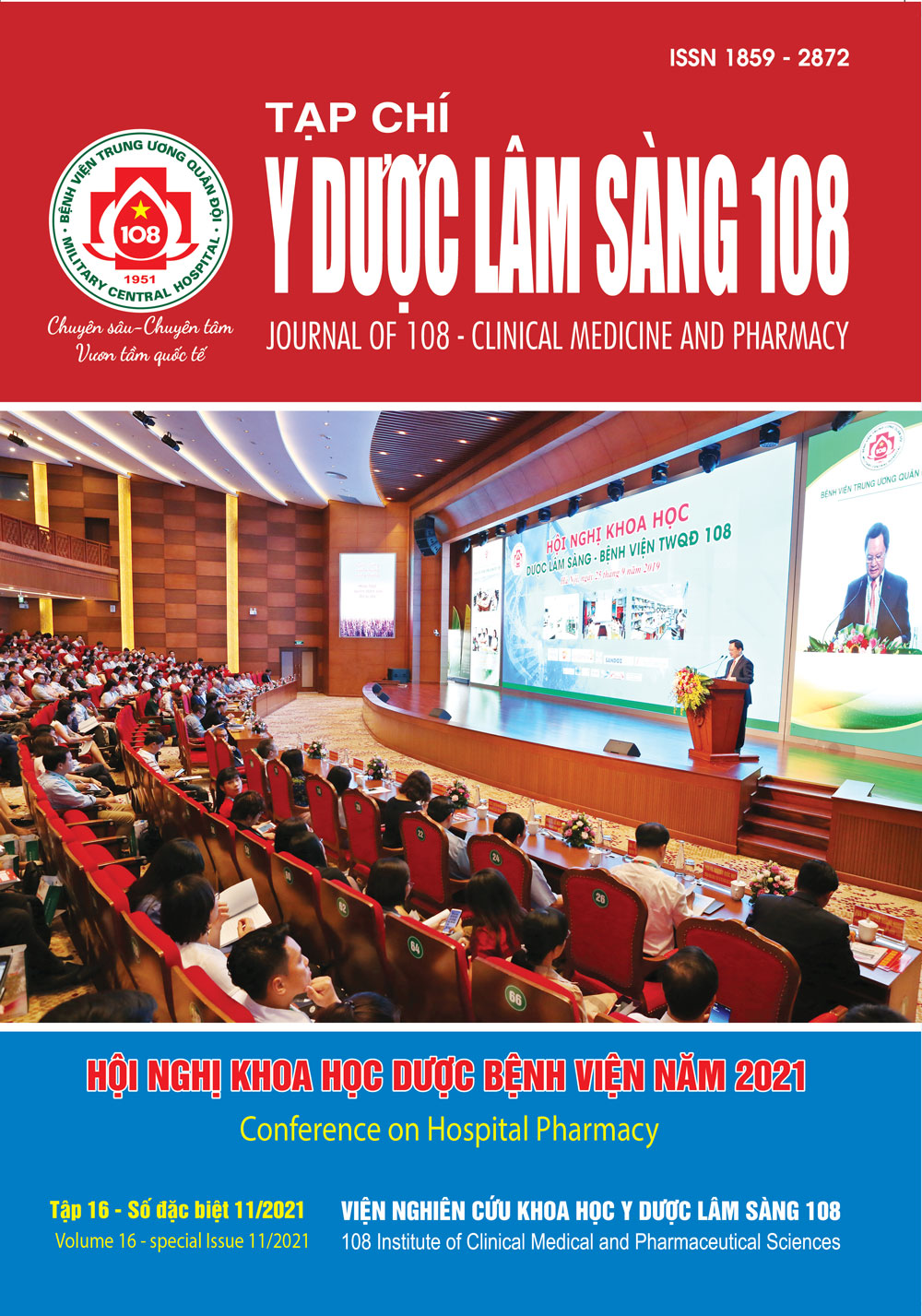Screening hematology laboratory signals to detect vancomycin-induced neutropenia: Experience from Bach Mai Hospital
Main Article Content
Keywords
Abstract
Objective: To screen and identify vancomycin-induced neutropenia in hospitalized patients based on laboratory database and to describe characteristics of these case. Subject and method: This was a descriptive-restropective study of inpatients at Bach Mai Hospital. These patients had a neutrophil cout < 1.5G/L and used vancomycin based on laboratory database and electronic medical record were collected in 2019. The cases of vancomycin-induced neutropenia were defined according to the WHO-UMC causality assessment system. Result: Of 2248 neutropenia cases, 75 suspected vancomycin-induced neutropenia (3.3%) cases were identified. The incidence of vancomycin-induced neutropenia in patients treated with vancomycin was 75/2998 (2.5%) which corresponding to 75/165644 (0.05%) inpatients during the study period. The severity of neutropenia in most of the cases were classified as serious and life-threathening (57.4%), with lag time of more than 1 weeks (52.0%) and the time to be resolved within one week (54.7%). Conclusion: Screening laboratory test result were found to be adjunctive approach to identify cases suspected with vancomycin-induced neutropenia, which is often under-reporting by the spontaneous reporting system,.
Article Details
References
2. Bộ Y tế (2007) Bảng phân loại quốc tế bệnh tật (ICD-10). Nhà xuất bản Y học, Hà Nội.
3. Phạm Thị Diệu Huyền và cộng sự (2018) Tầm soát biến cố tăng kali máu liên quan đến thuốc thông qua kết quả xét nghiệm cận lâm sàng tại Bệnh viện Hữu Nghị. Tạp chí Y học Việt Nam, tr. 130-137.
4. Trần Thị Ngọc và cộng sự (2016) Tầm soát tổn thương gan do thuốc thông qua kết quả xét nghiệm cận lâm sàng tại Bệnh viện Hữu Nghị. Tạp chí Nghiên cứu Dược và Thông tin thuốc, tr. 148-155.
5. Bùi Thị Ngọc Thực, Phan Thị Thuý Hằng và cộng sự (2020) Biến cố hạ kali máu liên quan đến thuốc. Tạp chí Y học lâm sàng, số 115, tr. 64-72.
6. Emily Black et al (2011) Vancomycin-Induced Neutropenia: Is it Dose- or Duration-Related?. The Annals of Pharmacotherapy, Volume 45: 629-38.
7. Liu C Bayer A et al (2011) Clinical practice guidelines by the infectious diseases society of america for the treatment of methicillin-resistant Staphylococcus aureus infections in adults and children. Clin Infect Dis 52(3): 18-55.
8. Manjunath PP Mercier RC et al (2006) Epidemiology of vancomycin-induced neutropenia in patients receiving home intravenous infusion therapy. Ann Pharmacother 40(2): 224-228.
9. Pick AM, Nystrom KK et al (2014) Nonchemotherapy drug-induced neutropenia and agranulocytosis: Could medications be the culprit?. J Pharm Pract 27(5): 447-452.
10. Schimpff S, Satterlee W et al (1971) Empiric therapy with carbenicillin and gentamicin for febrile patients with cancer and granulocytopenia. N Engl J Med 284(19): 1061-105.
11. Tisdale James E (2018) Drug-induced diseases: prevention, detection, and management. American Society of Health-System Pharmacists.
12. World Health Organization (2006) The use of the World Health Organization-Uppsala Monitoring Centre (WHO-UMC) system for standardised case causality assessment.
 ISSN: 1859 - 2872
ISSN: 1859 - 2872
